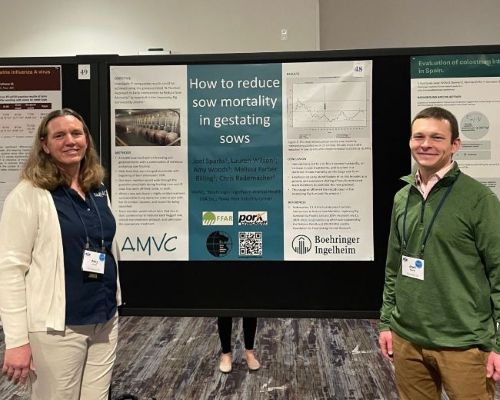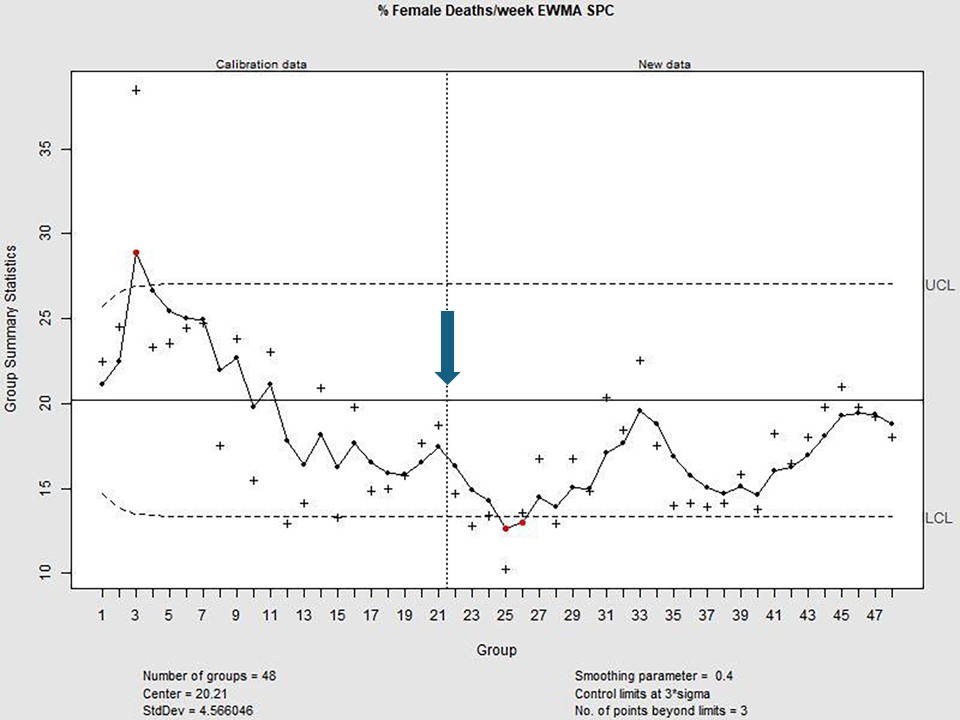
posted on Tuesday, April 22, 2025 in Swine Health Services News
At this year's American Association of Swine Veterinarians Annual Meeting in San Francisco, Joel Sparks and Amy Woods with AMVC Management Services and AMVC Swine Health Services presented field data from a commercial sow farm, reinforcing the idea that when simple animal husbandry practices are executed well, they can positively impact overall production. Their poster, "How to Reduce Sow Mortality in Gestating Sows," built on findings from the Improving Pig Survivability Project and showed that subtle changes in how and when sows are observed can result in significant health improvements.
The study aimed to determine whether implementing a practical early intervention protocol developed in the Improving Pig Survivability Project would yield measurable benefits in a commercial operation. Conducted on a 10,000-sow herd in Indiana with barns featuring both individual and group housing, the trial provided a real-world setting for testing scalable management changes.
Observing sows when it matters
Previously, the feed was dropped via a timer several hours before barn staff arrived, meaning sows had often finished eating when caretakers made their first rounds. This timing masked early signs of illness, especially in group housing where individual feeding behavior can be more challenging to observe.
Two operational changes were made:
- Feed timer settings were adjusted to coincide with the arrival of farm staff, allowing observation during peak sow activity.
- A designated team member walked the barns during feeding, flagging off-feed or lame sows with bright treatment cards showing the sow's ID, location and issue.
Later, the same employee returned to evaluate and treat each flagged sow using standard farm protocols. This structured process established earlier interventions without slowing down daily chores.
Real-world results
The changes led to tangible improvements: the number of sow treatments increased, while overall sow mortality decreased, suggesting that more animals were being identified and treated earlier. An additional benefit was a renewed focus on husbandry by team members, and consistent communication of results helped maintain their engagement.
The figure below shows the annualized weekly sow mortality. Interventions began during week 21, as marked by the arrow. Results showed a 3.85% reduction in sow deaths from 20.21% to 16.34% after implementing the new protocols.

These outcomes echoed the findings of the Improving Pig Survivability Project and reiterated the value of early, intentional observation during critical activity periods.
Practical takeaways for producers
This case study proves that early observation and structured follow-up can significantly affect sow survivability without adding additional labor or resources. Aligning feed delivery to sows with staff arrival, marking sows in real-time, and returning later to treat is a low-cost way to drive better outcomes. Sometimes, success comes from refining what's already in place.
Source: National Hog Farmer
Tags
- aasv
- ag education
- amvc employees
- amvc veterinarian
- event
- industry involvement
- our team
- research
- swine